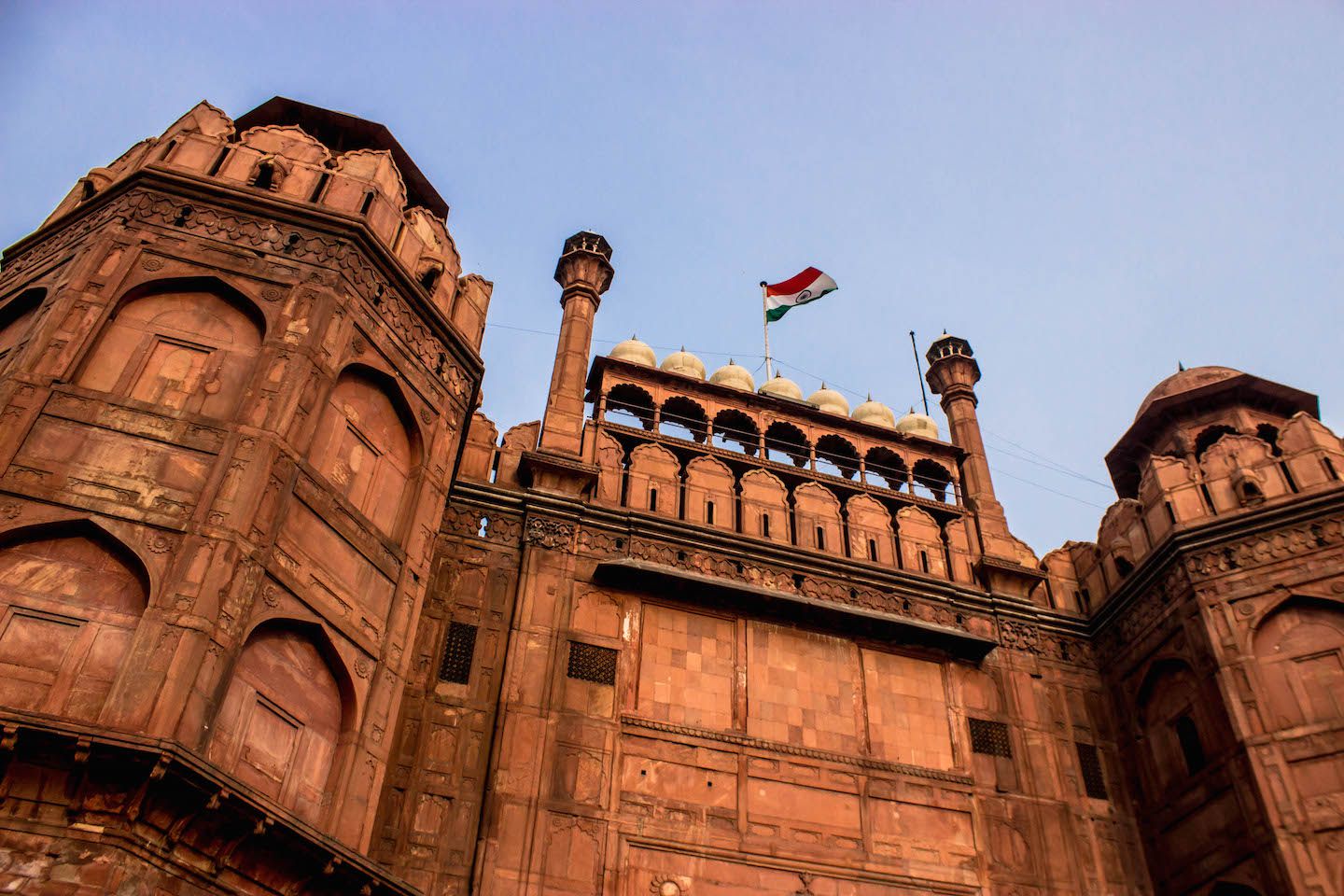The chaotic and bustling New Delhi is a combination of medieval temples and Mughal mausoleums, dusty bazaars and supermalls. Some could say that the city that is home to 25 million people could be overwhelming for a first stop in India; however, it was the perfect stop for us and a nice introduction to what is to come in India. After some delays to our flight from Kathmandu, we finally made it to New Delhi and started exploring the streets and sights of the city.
Qutb Minar Complex
Once the tallest skyscraper in the world, the Qutb Minar is a majestic tower-like structure situated at the Qutb Minar Complex. It was the first “sight” we visited in India and it looked different than everything we’ve seen in this trip so far. The Islamic architecture was such a new concept to us and thus we found it even more beautiful than usual.

The red sandstone walls of the tower were embellished with intricate carvings and verses of the Quran – we spent quite some time just analysing all the details on the tower. We even noticed that it was slightly tilted from the vertical, which we later confirmed.

The many medieval mosques, mausoleums and ruins surrounding the tower were equally stunning. There was something very enticing about the simplicity of Islamic designs. It didn’t scream “look at me” with shiny tiles and colourful facades, but it drew in the eyes with its symmetrical patterns and distinctive styles. Sometimes less is more. Wandering through the grounds of the Qutb Minar Complex and exploring this new world was fascinating.
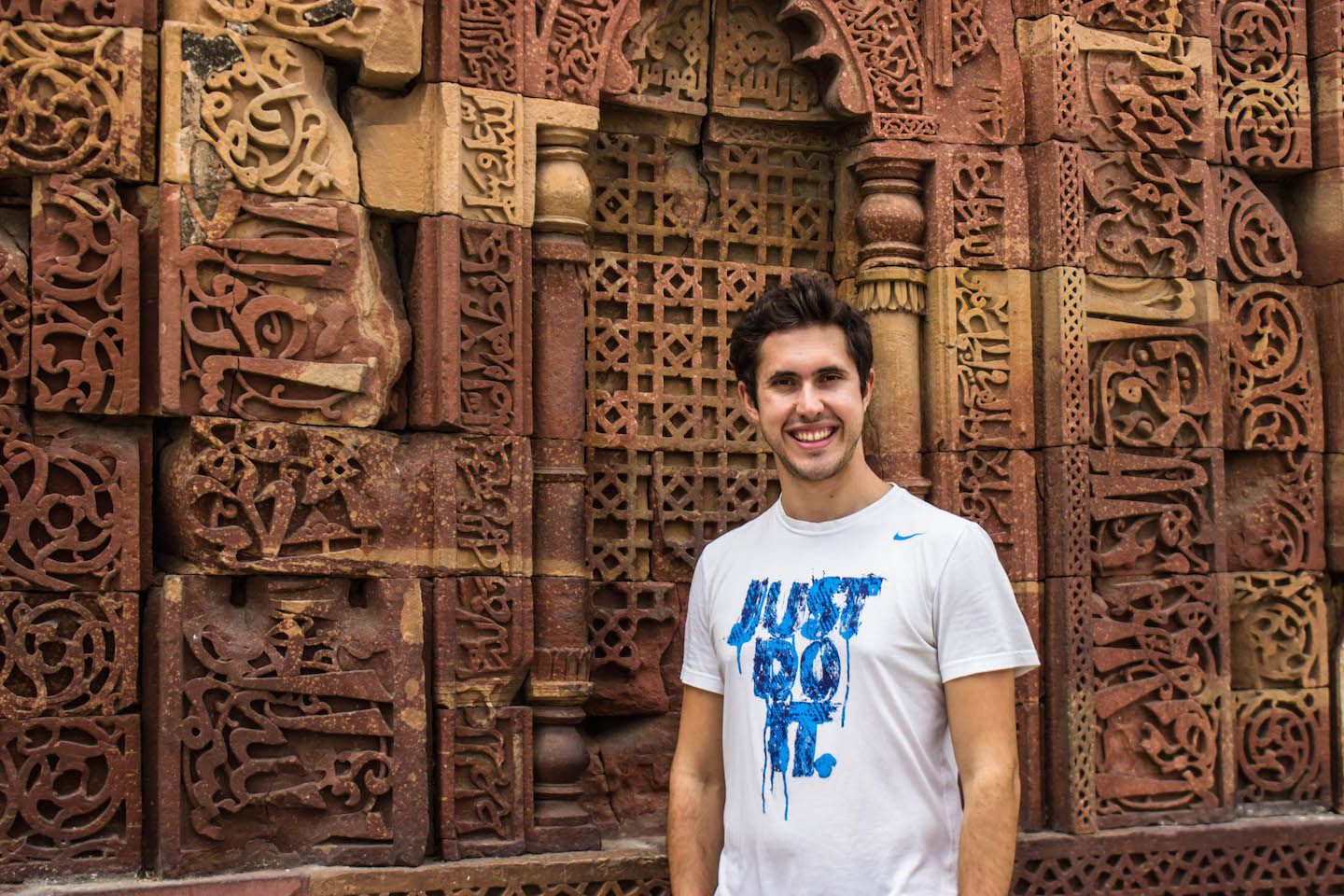
Our last stop in the complex was at the iron pillar, a 7m iron tower that remains a mystery to archaeologists due to the inscriptions on it that predates the construction of all the structures around it, even that of Qutb Minar itself.
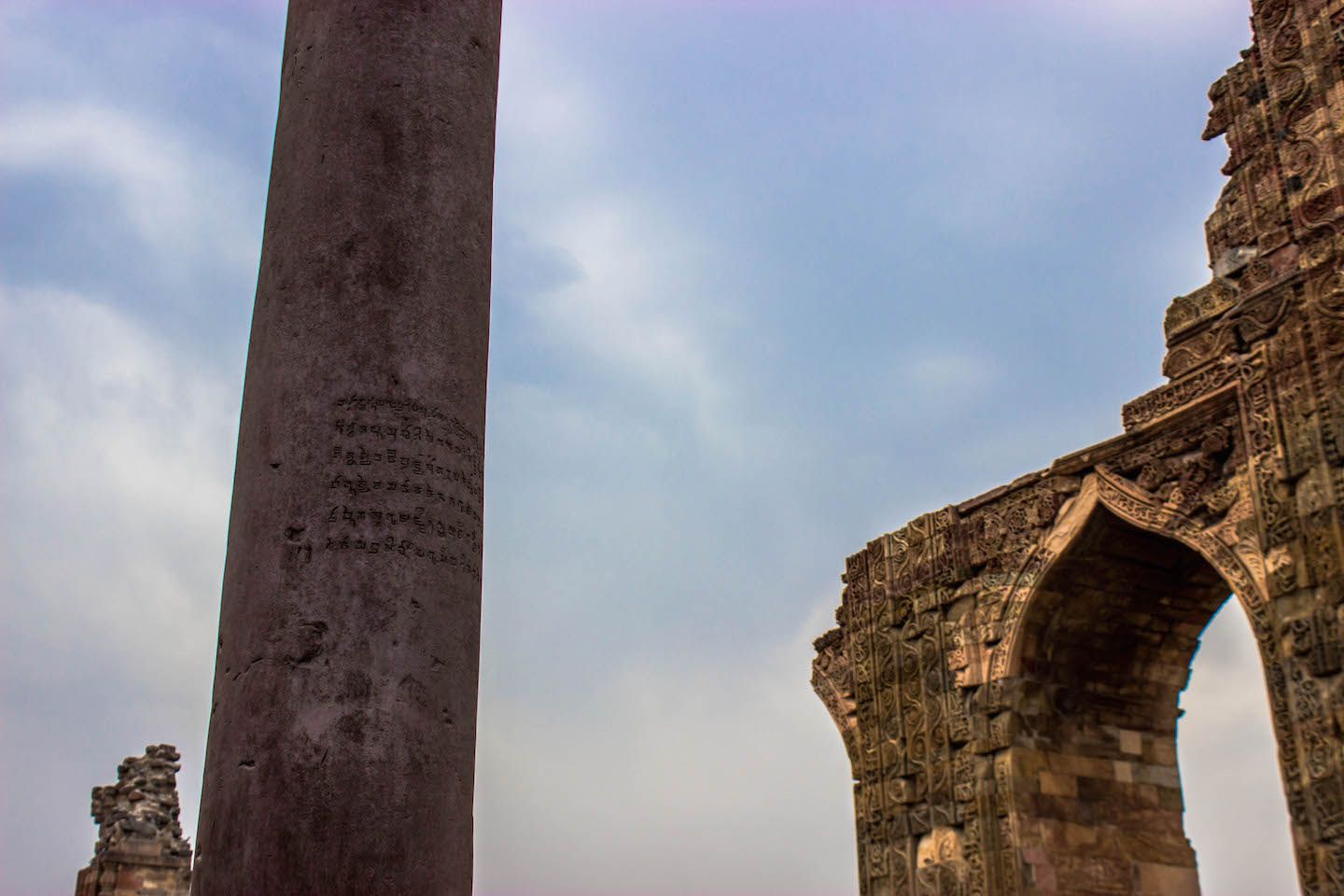
Lotus Temple
Right after Qutb Minar, we headed for the Lotus Temple. Even though there isn’t much to do in the premises of this iconic structure, Julie and I wanted to see its unique architecture. However, our plans fell apart by the time we arrived at the metro station leading to the temple. There was a line of devotees extending for as far as our eyes could see, around the perimeter of the temple park area. Brazilians love lines, but I had never seen such a long time with so many people! We checked for a foreign tourist line to no avail.

The best we could do was to look at the marble petals amidst the large green garden surrounding it from afar.
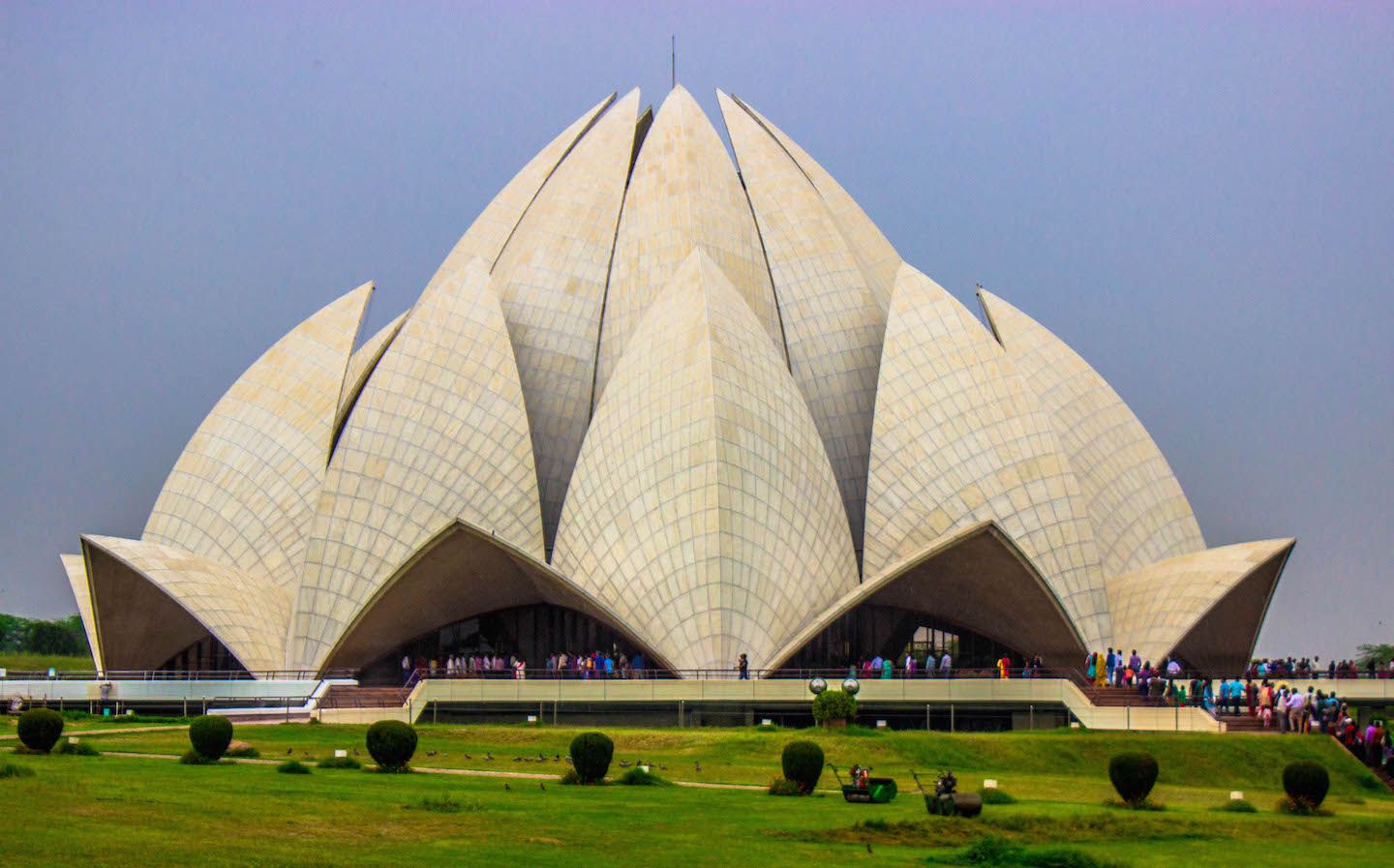
Humayun’s Tomb
Seeming to float above the surrounding gardens, Humayun’s Tomb is a fine craft of Islamic architecture and was the first of its type in the Indian subcontinent – even serving as an inspiration to the design of Taj Mahal itself.
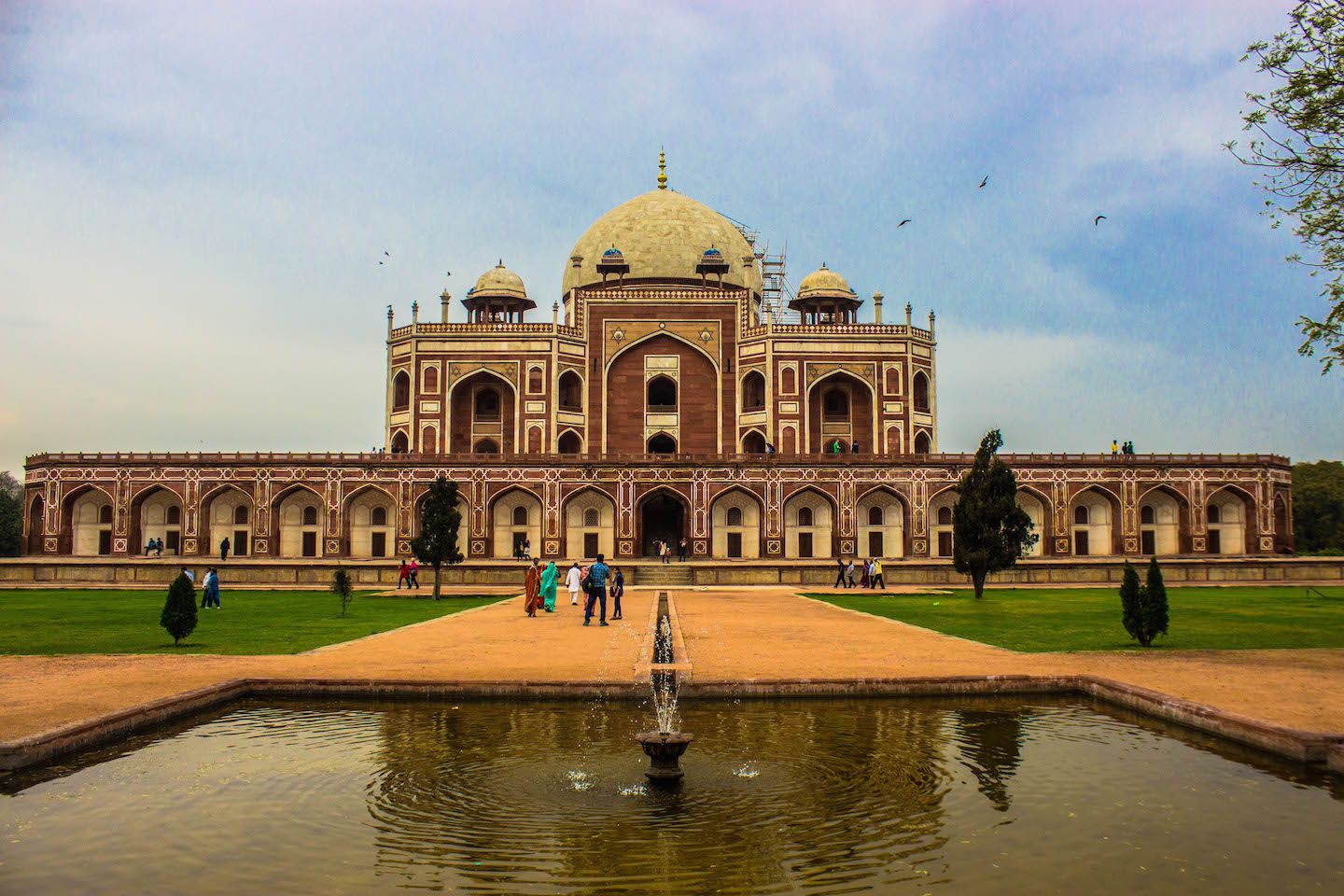
As we entered the the area through the west gate, a horde of tourists greeted us, overshadowing the grandeur of the mausoleum. We quickly made our way to the south gate, where the tomb looked practically identical to the west gate (thanks to the symmetry of Islamic architecture), but with barely anybody around. Apparently most people were just too lazy to walk off the main path. The view was so much better when we had it just to ourselves.
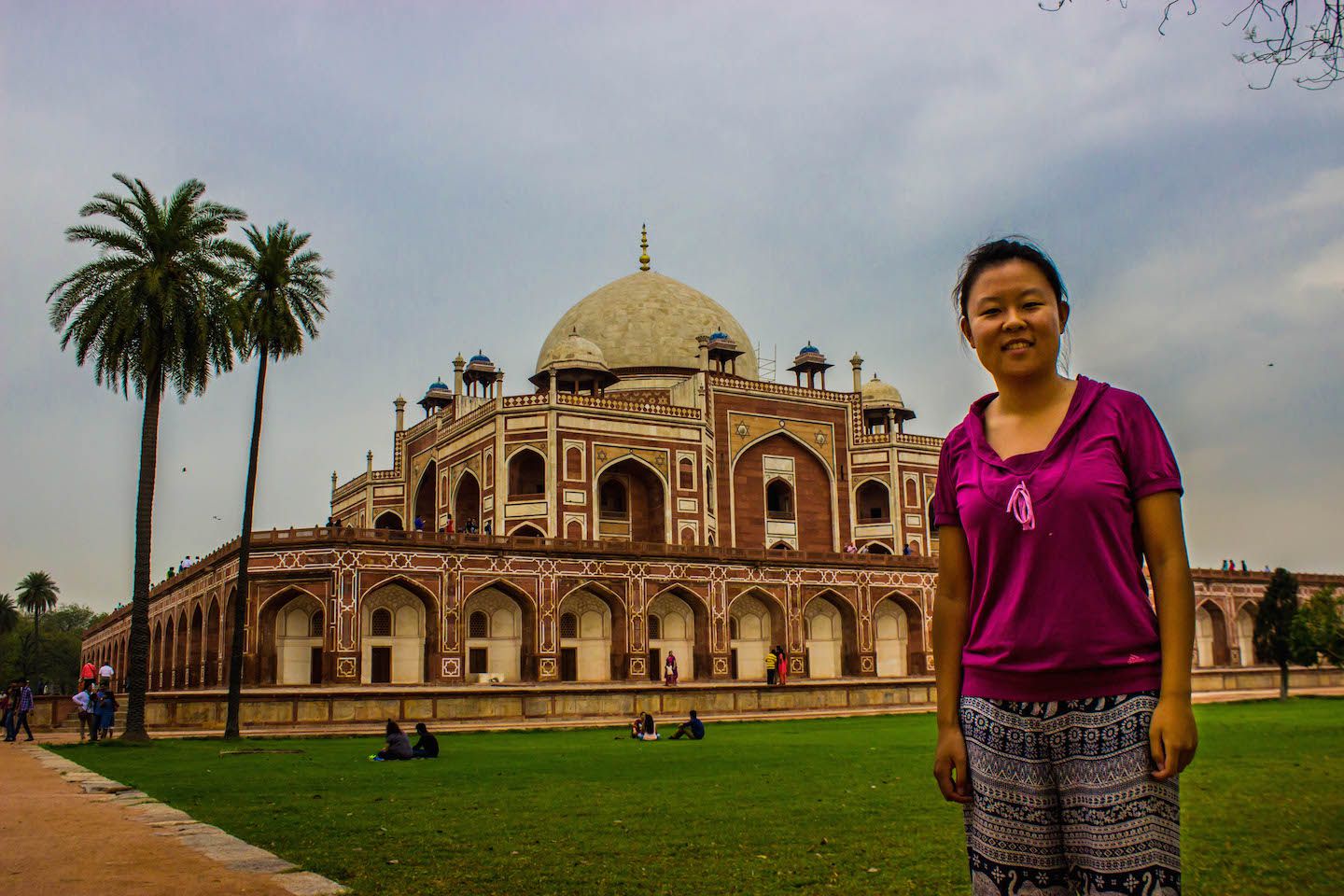
The gardens were a great place to just sit, reflect, and enjoy the view, away from the hustle and bustle of India. Fountains and water canals circled the entirety of the gardens, adding character and complexity to an otherwise grassy area. I wouldn’t mind having a backyard like this.
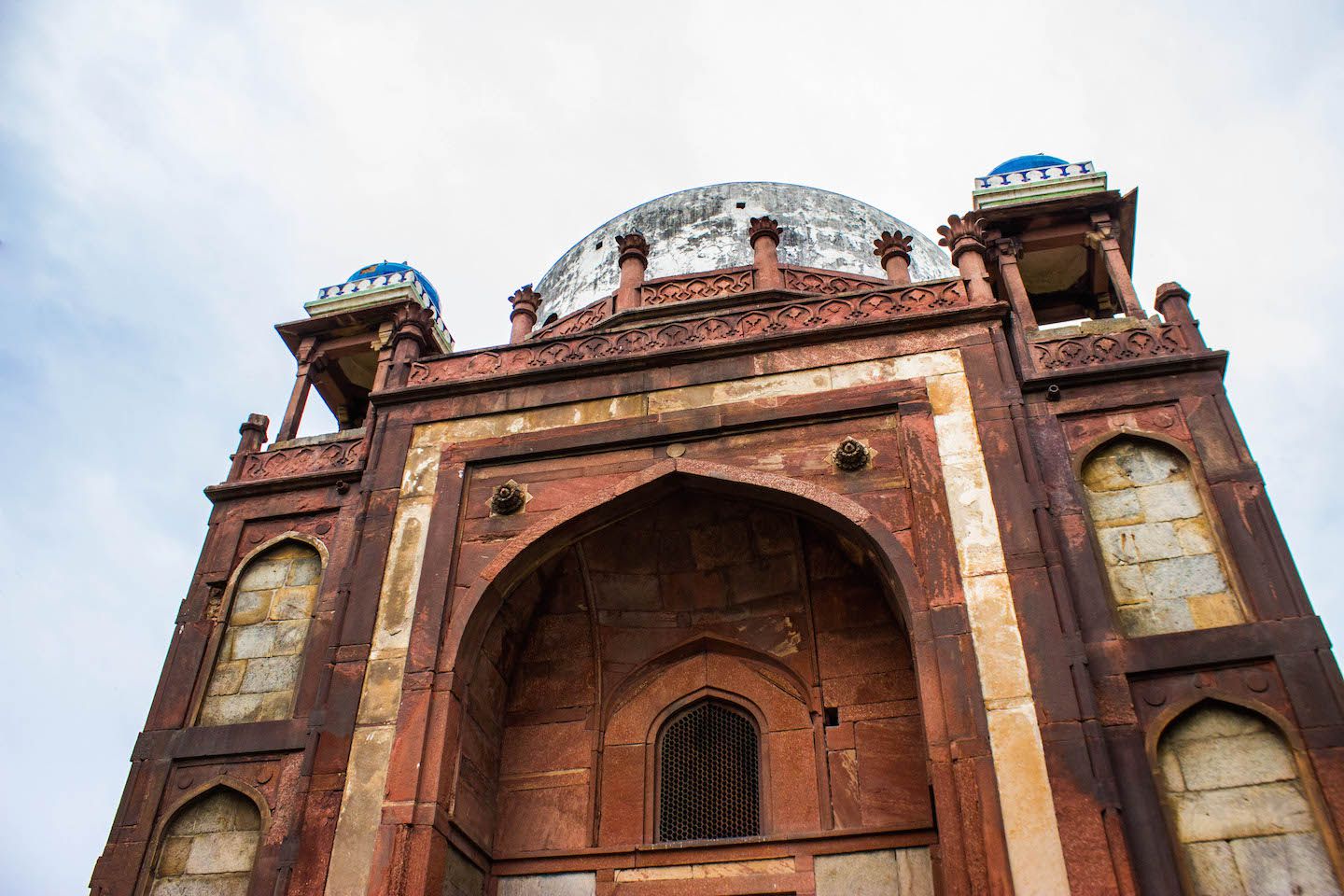
The undeniable center of attention was the tomb of the Mughal emperor Humayun, who ruled over a territory including current northern India in the 1500s. An imposing red sandstone structure with contrasting white marble inlays and a crowning dome, it was quite the place to be buried. We took our time appreciating the mausoleum on the outside before we walked inside.
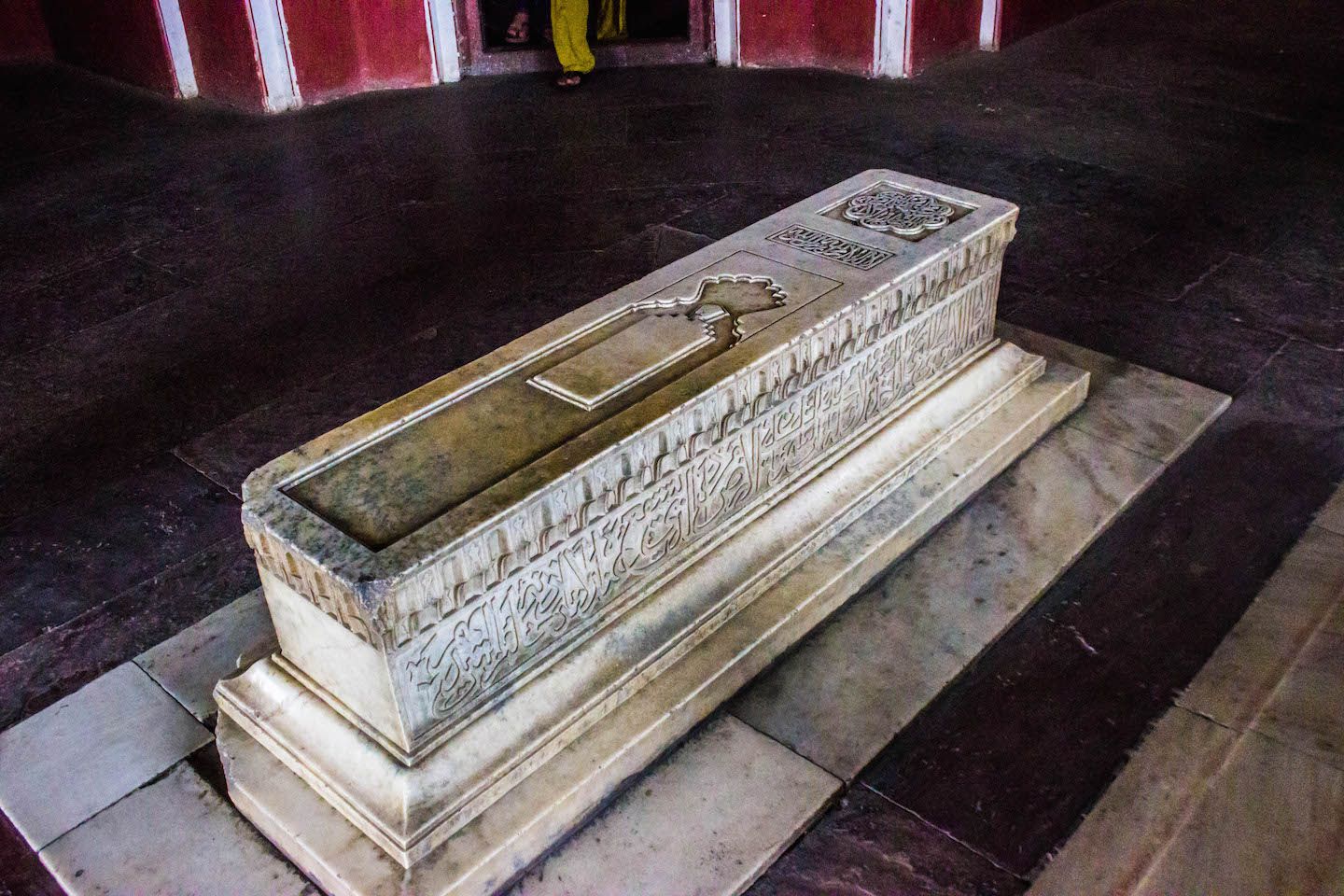
A steep set of stairs led to the upper terrace, from which one can enter the actual tomb inside the mausoleum. The room was rather dark and much of the details on the walls couldn’t be seen, so we kept the visit short. We have always found this type of building to be more visually appealing on the outside than the inside.
Humayun’s Tomb was a great preview of what Taj Mahal would be like and it made us that much more excited for Taj Mahal to come.
Red Fort
The famous Red Fort, surrounded by tall red sandstone walls and heavily guarded by the New Delhi police, was one of our most anticipated sights. The rickshaw ride from the metro station to the gates was an event in and of itself. I still don’t know how we made it past such narrow gaps among the cars, motorbikes, people and cows on the streets – I guess the art of driving in India will remain a mystery to me forever.
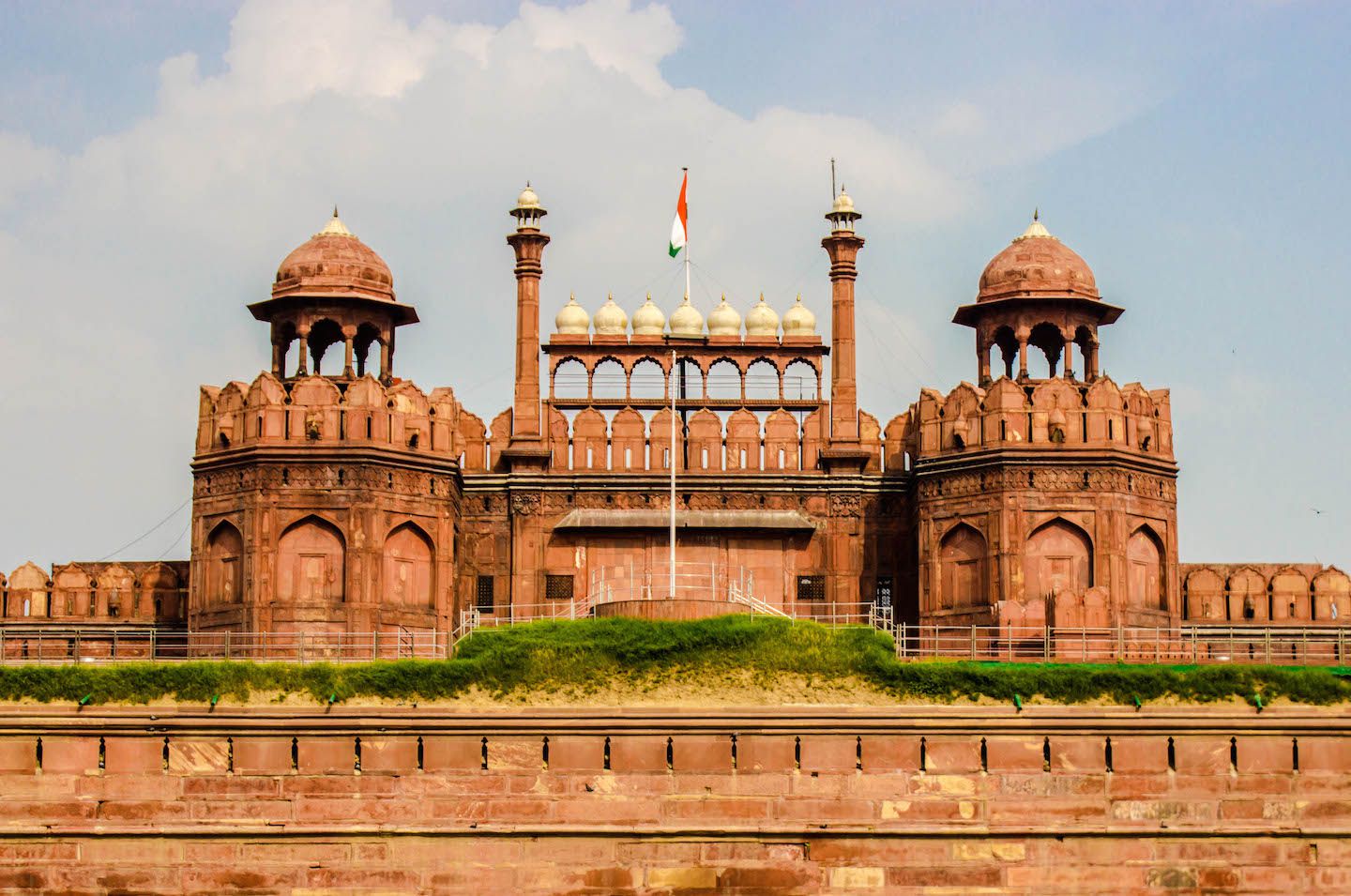
Lahore Gate was the only open entrance into the fort and was the most impressive structure in the whole complex. It was a sign of power and wealth that the Mughal emperors made sure to carve into stone during their empire’s most flourishing time.
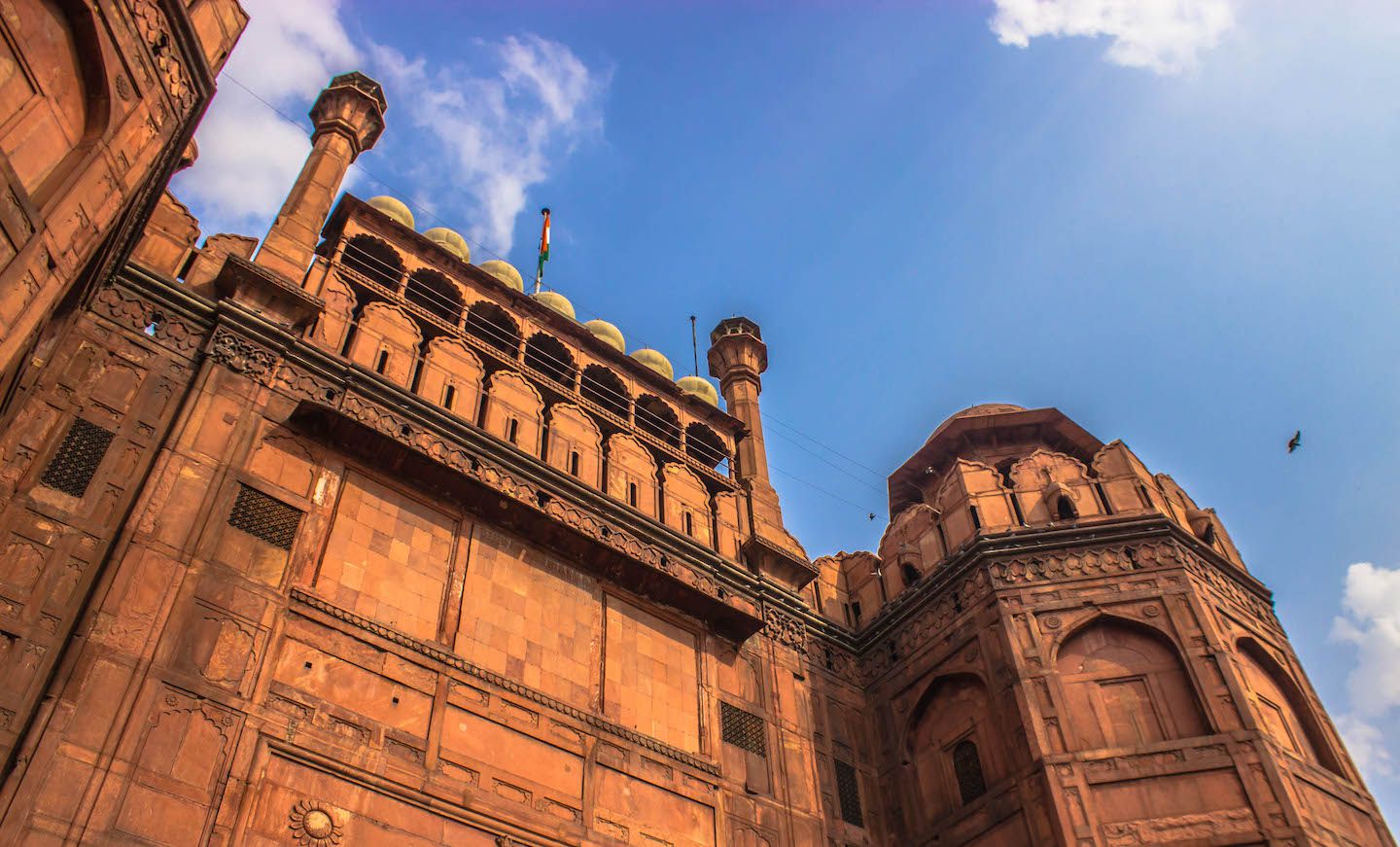
Inside the gates, the other structures were found in ruins and heavy restoration was taking place. We skipped those areas and focused on sections of the Red Fort that showed what remained from the original structures, such as the Diwan-i-Khas, or hall of private audiences used to receiving distinguished guests.
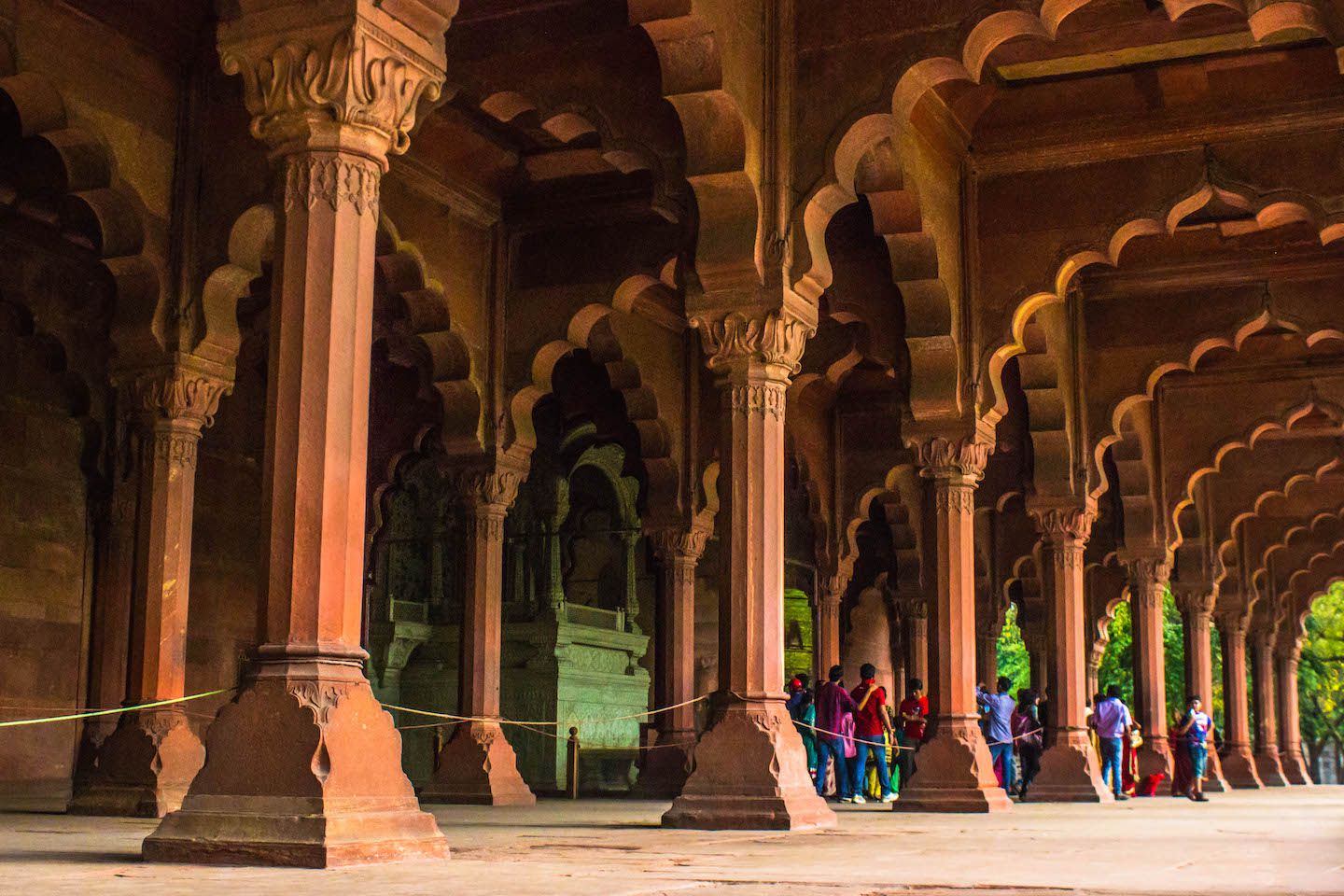
All in all we expected more from the Red Fort. After walking through the grounds, we sat there underwhelmed and quite disappointed – the garden and the surrounding buildings looked like a college campus and there was little to no indication that it was once a fort.
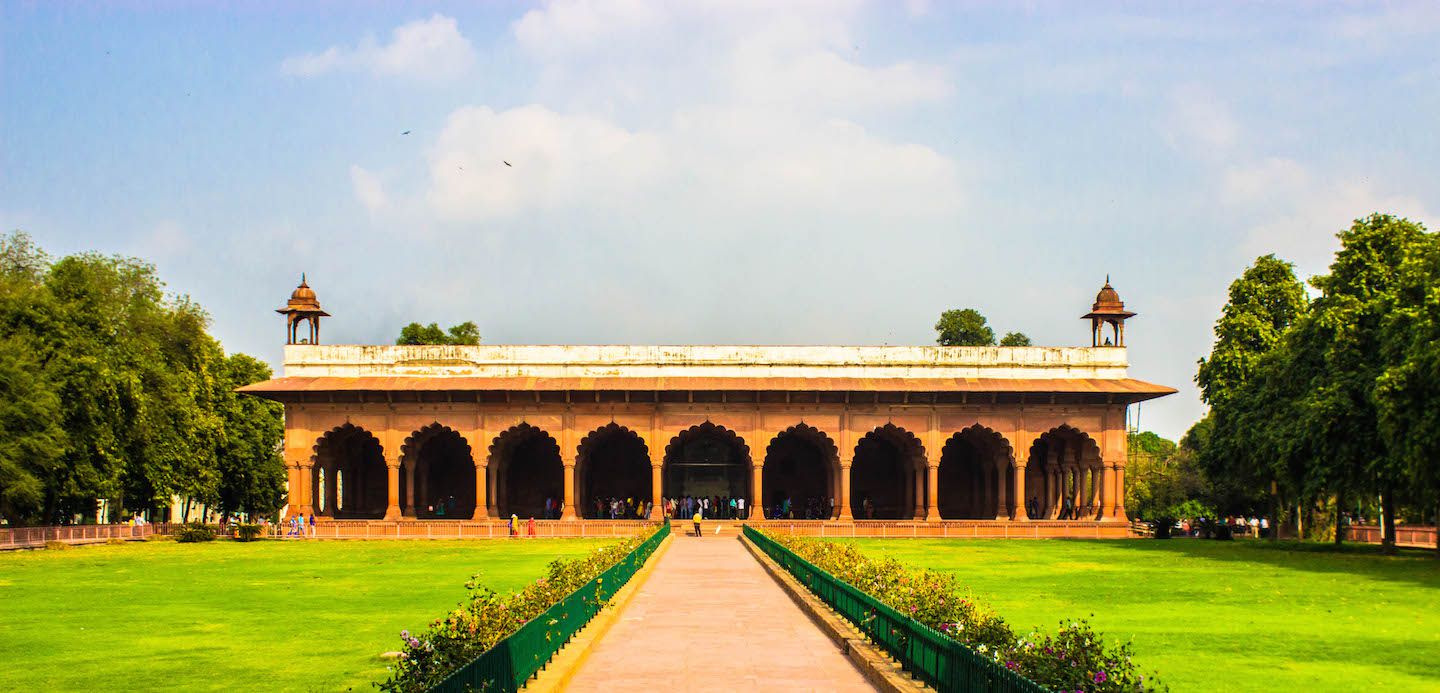
Connaught Place
In the middle of New Delhi lies the British pounding heart of Connaught Place, a relic from the colonial period. We stayed nearby in the backpacker district of Paharganj, so Connaught Place was only a stone’s throw away. Radiating out from the center circle, Rajiv Chowk, the circular European-style streets with many shops and restaurants was a great place to wander.
We approached Connaught Place from the outside in, relishing the order in chaos that is any place of public gathering in India. Connaught Place culminated at Rajiv Chowk, the green park where locals come to spend their time and meet friends. We found refuge under the shade and watched locals enjoy their weekend. A gigantic national flag waved in the wind and we felt like we had really arrived in India.
New Delhi was the perfect combination of chaotic and, in its own way, charming. Like any metropolitan, capital city, there were so many more other sights to see and not enough time to see them. Nonetheless, we found what we did see to be a good introduction to India, a teaser for the many facets of such a diverse country. From New Delhi, we also took a day trip to Agra to see the Taj Mahal.
For more pictures from New Delhi, please visit the gallery!
